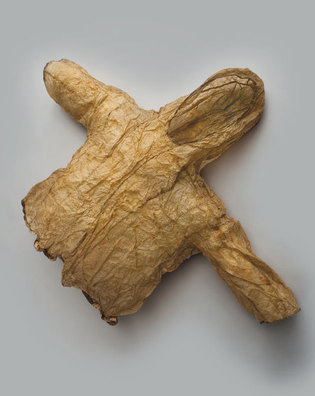 loading
loading
Last LookStaying dry in the ArcticAn animal-gut parka at the Peabody.  Mark MorosseView full image
For surviving the ferocious cold, native peoples of the Arctic used fur. But for keeping off rain, sleet, and the ocean spray of a kayak hunt, they needed raincoats. In a place and a time without rubber or plastic, what could they use for waterproofing? Animal intestines. This translucent gut parka was acquired by the Peabody Museum of Natural History in 1926 or earlier, but little else is known about it. Its small size—about two feet from wrist to wrist—suggests it was a child’s. Aron Crowell, Alaska director of the Smithsonian Arctic Studies Center, says it was made from the intestines of a large sea mammal, and most likely is a product of Alaska or Arctic Canada. To prepare the material, artisans (usually women) cleaned the intestines with scraping tools and then inflated them, to stretch and straighten the tissue. The dried gut was then cut into strips to be sewn together with sinew—which swelled when wet, producing leak-proof seams. Gut parkas, as well as fur and skin garments, boat covers, and other necessities, were produced with needles of bone. Says Crowell, “It’s often said that the most important tool to help people live in the Arctic is the needle.”
The comment period has expired.
|
|